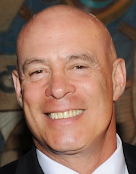While typical scientific research sorely lacks necessary observation, observation is exactly what credible eyewitness testimony provides.
Though there is plenty of evidence, none of it can prove with certainty that consciousness survives permanent bodily death. No eyewitness has survived permanent bodily death. The next best witness is someone who has survived temporary bodily death, remembers remaining conscious during the event, and is able to recall and recount specific details from the event. This is an experiencer, someone who has actually experienced death (or near-death), remained conscious throughout the process, and witnessed the afterlife for themselves.2 There is an abundance of experiencer eyewitness testimony that serves as credible evidence in both the public and private domains—experiencers of near-death experiences (NDEs).
From reading or listening to individual NDE testimonies, an inference can be made that consciousness does survive permanent bodily death from the extrapolation that consciousness survives temporary bodily death in NDEs. And the best existing experience that comes closest to permanent death is near death. I am not a scientist, a scholar, or a faith leader. What qualifies me to address the question is my own near-death experience, which turned me from an adamant skeptic to—not just a believer—a knower. I now know that our souls continue on after bodily death.
More than that, the NDE changed me in ways I never could have imagined. On September 1, 1988 I was a skeptic. Nothing could have dissuaded me from believing that when a person dies, that’s the end—that they are gone and nothing of them remains. But a bolt of lightning literally jolted me into reality.
On September 2, 1988, that lightning bolt bestowed upon me a gift, the power and profundity of which remain unmatched more than three decades later. That gift was knowledge that death isn’t the end; knowledge that where we are now is a temporary place, and where we go when we die is home; knowledge that what we do with our time here matters and affects our afterlife; knowledge that our souls, the vessels that carry our consciousness, continue on after bodily death and actually become keenly aware, awake, and all-knowing once unencumbered by our bodies.
It’s this element of my NDE, the knowing, that qualifies me to answer the question of what the best available evidence is for the survival of human consciousness after permanent bodily death. Unless they have had an NDE, no researcher, scholar, faith leader, or scientist can know without any doubt that consciousness survives permanent bodily death. I can testify to that, and I do so without reservation. The certainty and penetrating knowledge resulting from my experience and the experiences communicated by many who have had NDEs are the best and strongest evidence available.
Elizabeth G. Krohn and Jeffrey J. Kripal of Changed in a Flash: One Woman's Near-Death Experience and Why a Scholar Thinks It Empowers Us All (North Atlantic Books, 2018). Krohn received an award from the Bigelow Institute for Consciousness Studies for her essay “The Eternal Life of Consciousness,” available at https://bigelowinstitute.org/contest_winners3.php. Footnotes in the essay are not included in these excerpts from Changed in a Flash.












